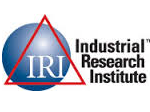BLOG & FEATURED ARTICLES
 May 26, 2017, Originally published at giminstitute.org Spot-Frame-Learn: From Emerging Technologies to New Business Models – by Irene Spitsberg
May 26, 2017, Originally published at giminstitute.org Spot-Frame-Learn: From Emerging Technologies to New Business Models – by Irene Spitsberg
Last week, I was co-presenting with Owens Corning’s innovation team at the IRI 2017 Annual Meeting in Boston. We shared a success story about building organization’s competency of integrating technology and business model innovation to drive business investment in new growth platforms and fast tracking ideas to market.
One example that we shared was commercializing disruptive material technology for 3D printing and achieving first commercial launch. The technology area itself resonated with many in the audience, and so did the team’s challenges in building the new business.
Reflecting on our story and the discussion it generated with the meeting participants, I wanted to share a few insights…
When I first met Anne Berthereau, R&D, VP of Emerging Technology and Composite Solutions Business at Owens Corning, her challenge was similar to that of many innovation executives: building her organization’s capacity to identify emerging technologies relevant to the company and engage business partners, turning them toward new growth platforms. Several key insights emerged from our discussion:
- The biggest change doesn’t come from your own market (think of Kodak and Netflix). How do you extend your search across the industry boundary, yet stay focused and relevant?
- There are many sources of information, but how do you know that you didn’t miss anything?
- An idea is not enough. How can you quickly learn which technology presents a real business opportunity?
- Information alone won’t make the business compelling. How do you engage business partners, ensuring their buy-in and commitment to adopting the opportunity?
Working with Anne and her team, we focused on overcoming three central challenges: 1) Establishing a robust capability to spot new technologies relevant to the company; 2) Using a strategic business context to create a framefor generating excitement with the business partners; 3) Building out capabilities for learning how selected technologies can be integrated into a business model (supported by the business).
Of the three challenges—spotting, framing and learning—the most attention is typically given to the first: finding new technologies that can become new growth ideas.
While this is by no means trivial, the actual challenge increases when fresh ideas must be turned into new business opportunities, then adopted by business units. This is especially true when new opportunities don’t fit neatly with the core business model, typically because the integration of new technologies: 1) Competes for R&D and business resources with established development programs; and 2) Requires learning new skills for succeeding with unfamiliar markets and new business models.
Our approach for spotting-framing-learning focused on:
- Leveraging internal and expanding external networks to systematically uncover technologies and provide a forum for knowledge exchange.
- Building an articulate framework to provide strategic context and ensure relevance and early engagement of business partners.
- Adopting a structured learning process; this requires hypothesizing and building new business models, then quickly reducing uncertainties by staging business experiments and market tests.
With technologies framed within the language of the business, the innovation pipeline came to life and first successes emerged. One was the major international platform, advanced into an early commercial stage; the first product launch was achieved by leveraging strategic partnerships.
Reflecting on my earlier discussion with Anne, I think this Owens Corning’s example confirms that building organizational competency—learning how to succeed in unknown markets and with unfamiliar business models—is critical for shaping growth opportunities, and turning your portfolio into market success.
If you have a challenge, insight or story to share, I would love to hear it. Please connect with me at irene@strategicinnoventures.com.
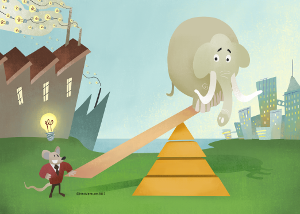 March 19, 2017, Originally published at giminstitute.org Agile Development and Lean Startup Methodology – by Irene Spitsberg
March 19, 2017, Originally published at giminstitute.org Agile Development and Lean Startup Methodology – by Irene Spitsberg
Agile Development and Lean Startup Methodology: How Do They Fit Your Innovation Agenda?
Having worked with a number of companies over the last two years implementing “lean startup” processes, I’ve noticed that there is still quite a bit of confusion surrounding certain Lean Startup concepts and Agile Development. More specifically, can they be integrated with the Stage-Gate process many companies use for new product development? Or should they remain separate?
How you organize for innovation and growth and what processes you use should depend on your company’s specific growth strategy and innovation objectives (e.g. integrating an emerging technology to maintain market leadership in your space is different – requires a different approach – than entering an entirely new market). Using more than one process is okay, too (P&G and Corning, for example, are innovative companies known for evolving their innovation management system and processes—continuously adapting to their growth strategies).
Here are a few tips from my own practical industry experience and that of my clients.
What are Stage-Gate processes?
Stage-Gate processes are the key process for innovating your core offerings. Even after implementing Agile methodologies and Lean Startup techniques, Stage-Gate processes remain important. It’s not that Agile and Lean Startup are better processes, but they just serve a different purpose.
Stage-Gate processes are most effective when your target customer(s) and markets are well defined, as it’s possible to establish clear objectives and performance targets. Projects suitable for Stage-Gate aim at maintaining or growing market share, or increasing profitability of existing and future products. These are the company’s lifeblood. That is, revenues from core products will pay bills today and generate cash for investment in future growth.
Keep in mind, too, that Stage-Gate is not a project a management process. It is a commercialization process for holistically aligning company resources for market delivery.
What is a Lean Startup?
Lean Startup is popular terminology for what is in practice strategic innovation (for future growth projects and initiatives). It is not about developing a new product; rather, it is about building a new business and innovating on the three parts of your company’s strategy: Who is your customer? What value should you deliver? How should you deliver it? Strategic innovations carry a high degree of uncertainty and risk. With this higher risk, there should be commensurate potential returns.
While the Lean Startup approach is often treated as a philosophy, these projects also require precise planning and discipline. But a different type of planning, compared to the rigid discipline of Stage Gate. Unlike with innovations in the core, the uncertainty here is much higher. Requirements cannot be established upfront and will evolve as you learn more about the market. The planning priority, therefore, should be to quickly identify and resolve the biggest uncertainties—often done through market prototyping (commonly known as your Minimal Viable Product (MVP), or Prototype).
Lean Startup processes should be carefully designed with commercialization in mind—not just as an exploratory process. Start by asking, How should we define success of the project? and not Can we prove that this [technical idea here] can work? It’s also critical that you build in provisions for leveraging resources of the core business. This is because many lean startup projects fail at the transition stage, when they are to be adopted by the business. The business, however, is usually not prepared.
What Agile IS and IS NOT
Agile is NOT a holistic commercialization process, but it IS a project management approach. Agile methodology came from software development. Translating this methodology to other types of companies, no matter what the industry, yields the fundamental principle of organizing development loops—or sprints—focused on answering a specific, well-defined question or set of questions.
Using Agile approaches with a stage gate
In a situation with one major uncertainty requiring resolution, it makes sense to make additional investment. Think of it as testing one parameter once all others are fixed. Such agile loops can be organized within any stage. For example, it can be useful in the early stages of projects with higher degrees of technical uncertainty, when the product concept needs fleshing out and/or when external technology needs to be identified and integrated.
Integrating an Agile approach with your Lean Startup process
In this case, there are many uncertainties at once, and the interface between each loop and the overall project is fairly complex. Recalling the previous analogy, there are not many parameters that can be fixed upfront. Therefore, the process itself should be organized as a sequence of loops. During each loop, key uncertainties should be identified and addressed in each of these four areas: Market, Technology, Go-to-Market, and Internal Organization. This ensures that no single uncertainty is overemphasized or worked on in isolation without revisiting the overall program direction. The loops repeat until risk is adequately reduced, enough so for making a major investment in the new business.
Designing systems and processes that are right for you is an art and a science. It is a science in the sense that you must observe certain fundamentals. This is where one can learn from innovation exemplars. Ignore these and you are guaranteed to fail. At the same time, you can rarely use best practices as they are, or out of the box, and usually have to adapt them to your unique goals. This almost always results in a unique approach, your very own version of the process—which is why it is an art.
If you are working to develop a path to improve your innovation outcomes, I would like to hear about your experiences. Please feel free to contact me at info@strategicinnoventures.com. To learn more and see case studies, visit http://www.strategicinnoventures.com
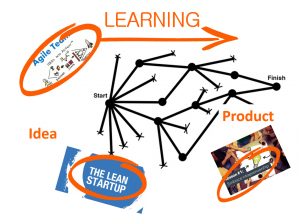 February 28, 2016, Originally published at PDMA.org The 3 things to consider before launching Agile and Entrepreneurial Teams – by Irene Spitsberg
February 28, 2016, Originally published at PDMA.org The 3 things to consider before launching Agile and Entrepreneurial Teams – by Irene Spitsberg
The 3 Things to Consider Before Launching Agile Development
There are two reasons why Agile growth strategies and innovation processes receive so much attention today. The first reason is speed. In a quickly changing market environment, companies want to innovate faster. The second reason connects to the notion that Agile development is a way to quickly explore and adapt while overcoming the rigidity of internal processes and long development cycles.
I know from personal experience that the Agile development concept is powerful and has a lot of potential. If you are considering its implementation in your organization, there are three things you should consider
1. There are different growth options, which are all important and need to be managed concurrently.
When it comes to Agile development, the focus is typically on the process side. This often clouds the fundamental issue of whether or not the company has the right projects in the pipeline to enable growth.
All projects can be divided, for simplicity’s sake, into core and new growth categories. This somewhat simplified approach helps provide a common language to describe how the company invests to prepare for growth. I intentionally use the word new here to emphasize that both options represent growth, just a different type of it.
Projects in the core category are critically important for serving existing customers and defending market share and profits. These projects must be delivered; therefore, only a certain level of risk is acceptable. Core projects should be managed through a Stage-Gate® process that is designed to reduce risk and variability.
Though core projects are important, they typically do not contribute much to long-term revenue growth and profitability. It is the new growth projects that bring new market (or business model) and technology attributes and that should be counted on for a sustainable competitive edge. These initiatives have inherent uncertainty; therefore, require different organizational and leadership frameworks to make them work. These are the initiatives where Agile development frameworks can be very effective.
Typically most resources are spent in the core, and the new growth domain is often short changed because it competes with the focus on day-to-day priorities in the core. Companies need to carefully screen and balance the portfolio so the core and new growth buckets are filled with the right opportunities. Understanding which project belongs to which bucket will also bring clarity to what development process should be used (Stage-Gate vs. Agile).
2. Agile development is not a substitute for Stage-Gate.
While recently delivering a workshop on Agile growth strategies to a group representing various companies and industries, I asked the participants to describe their typical growth projects in terms of market and technology newness. To take ambiguity out of the process, we used a unique scoring system and calibration of risk (G. Day HBR 2007) to estimate how much of a stretch these projects are for the company: The less familiar the market or technology, the further from the core business on the market technology continuum. Then, we combined the results into a group portfolio.
The result was interesting in that the representative growth projects were widely distributed on the market technology matrix, with a significant fraction of the projects positioned right at the core space. This finding provides an important insight: Growth can mean different things to different people, to different groups within companies or even among companies as a whole. Because of this scenario, defining a common language of innovation for your company is critically important in order to clarify how Agile development processes fit with the organization’s specific growth objectives (i.e., where and how they should be used).
3. Every process requires discipline.
One of the most common mistakes I see is that people think Agile (and entrepreneurial often fits under the same umbrella) means less disciplined. This is absolutely not true. Because Agile development deals with much higher uncertainty and risk, it requires even more discipline. It is harder to articulate milestones and new knowledge during exploratory work or when the objectives change, but a competent Agile team must do so in order to establish a clear direction for themselves and provide a decision-making framework for stakeholders and investors. Companies need a strong process with a clear set of expectations and deliverables to be successful with Agile development.
There are, of course, more gray areas between different opportunity types and management processes to use. However, starting with a clear definition of what growth options are important to your company and what resources are available to invest in each, as well as how to fill the pipeline with the right opportunities and use the right processes to deliver on growth, are the key steps to executing on Agile growth.
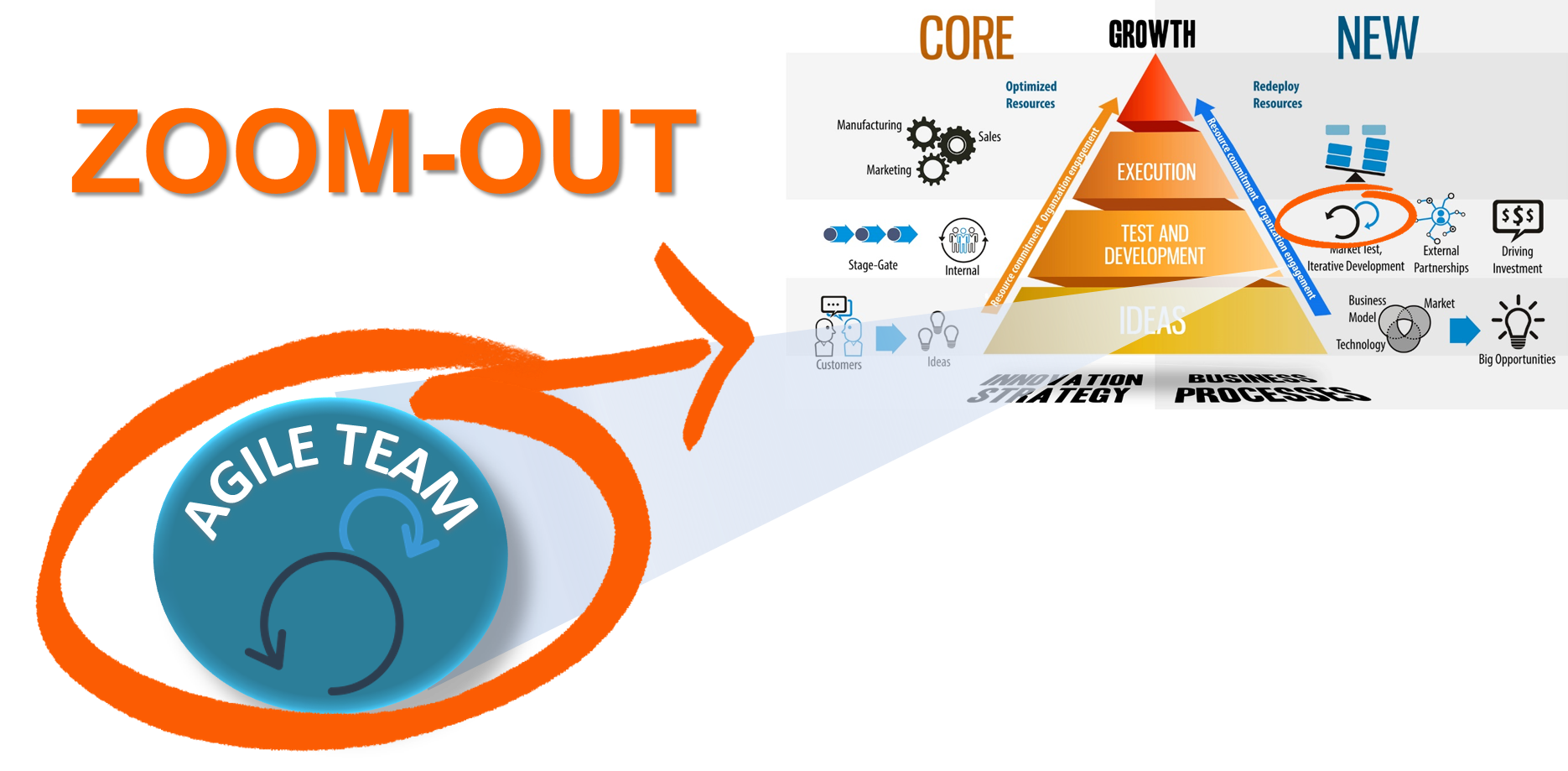 October 1, 2015, Originally published at PDMA.org Agile Strategies and Start-Up Thinking in Large Companies and How to Actually Make It Work – by Irene Spitsberg
October 1, 2015, Originally published at PDMA.org Agile Strategies and Start-Up Thinking in Large Companies and How to Actually Make It Work – by Irene Spitsberg
Agile Innovation and Lean Startups concepts have been around for a while. But if you ever tried to apply these entrepreneurial concepts in a large company, then you know that it is quite challenging and can be frustrating. (I know this from my first-hand experience). The reason for this is actually quite simple – because large companies are not start-ups. They are designed and operated differently. To innovate effectively, large companies can’t simply replicate start-up principles. Rather, they must adapt them in ways that are smart and tailored to their organization.
Agile and Lean Start-ups are often thought of as team concepts. But if you are a leader in a large company, a successful approach is to ZOOM-OUT and think at the enterprise level.
Meaning you begin by focusing not on individual entrepreneurial teams or their ideas, but rather on the strategic goals, priorities and organization’s competencies at large. Then, once you clarify these and identify the innovation capabilities’ gaps, you develop both new growth ideas and agile team processes that are closely aligned with your organization’s strength, and that are likely to deliver commercial results.
Having worked as an innovation leader in leading corporations for over a decade, and now advising Fortune 500’s on building innovation capabilities, I have distilled my practical experience into Agile Thinking principles – a practical framework to build an effective and efficient innovation delivery system in your specific context. You can apply these to turn three common pitfalls into opportunities:
- When pursuing new growth opportunities, companies too often misjudge the magnitude of departure from their existing business model. As a result, they over-rely on their established innovation processes. This leads to “new initiative” projects stalling and not delivering because the existing processes aren’t the right match for new growth.
- With many innovation trends continuously emerging on the scene, it is compelling to adopt them in the hope of achieving quick results. This typically fails because the introduced changes impact other processes and priorities potentially interrupting both “core” and “new” innovation.
- Often, when pursuing outside the core opportunities, companies rely on the creation of “Front End Innovation” groups to vet the ideas. It is common for these groups to work in isolation from the rest of the business, and often without clear deliverables and performance metrics. As a result, the execution of new growth ideas becomes an afterthought.
Please follow this link (can provide link to the white paper) to learn more about Agile Thin king methodology that can help you EXECUTE your great ideas!
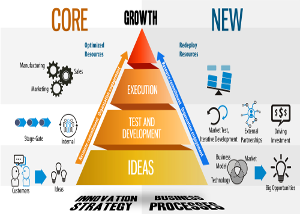 October 17, 2015, Originally published at PDMA.org Cracking the Code: How to Innovate and Execute Great Ideas – by Irene Spitsberg
October 17, 2015, Originally published at PDMA.org Cracking the Code: How to Innovate and Execute Great Ideas – by Irene Spitsberg
Cracking the Code: How to Innovate and Execute Great Ideas
There is myth and mystique surrounding innovation, namely that its key lies in finding great ideas and selecting the best ones. However, this quickly dissolves when these ideas meet the challenges of execution. The troubling fact is that as companies are pursuing entrepreneurial and intrapreneurial and efforts about 70 to 90 percent of these initiatives fail.
Based on my experience, the reason for most of these failures is that, inspired by showcase successes and seeking to quickly transform their organizations, leaders end up pursuing various initiatives to adopt new promising trends. They quickly lose focus captivated by the advice available in literature and media about how they should go about innovation: what they should do and how they should do it.
As innovators, we know that innovation delivery cannot be accomplished by simply replicating someone else’s approach. As much as we are inspired by great concepts, (e.g. Design Thinking and Agile Innovation), the reality is that successful implementation of these concepts within organizations can only come from a holistic approach – one rooted in deep insight and that takes into account an organization’s structure, culture, and business systems. You need to understand why things work (or don’t work) and to apply the methods that have the greatest chance of success in your specific context. In other words, you must identify your own unique pathways to success. To achieve this, leaders need to crack the code of innovation delivery.
From my own experience leading innovation teams inside top global companies, I have identified seven key drivers of success that, when implemented as a system, can transform your innovation capability. I am sharing then here:
7 Key Driver of Success:
- Setting innovation objectives. Achieving a clear and shared understanding of your innovation objectives has a profound effect on the ultimate success of your innovation efforts. This is true both in terms of gaining sustainable organizational support for new ideas, and ensuring that you have the right capabilities to execute on these ideas. Clear definitions help articulate the type(s) of innovation: sustaining or new; proximity to the core in terms of technology and market “newness”; and the percentage of organizational resources applied to various types of innovation efforts.
- Ideas generation. While it is true that ideas can come from many sources within or outside an organization, they never arrive fully formed. Successful innovations come from a deep and systematic examination of the market, technology and business ecosystem. This requires the right skills and an effective, systematic process for processing insights and “connecting the dots.” It is through this process that great ideas are identified and developed as potential new offerings, which can then be realized by your organization.
- Dealing with uncertainty. Successful new growth programs use a systematic process for identifying the riskiest areas and deploying plans for quick learning and market experimentation. The internal focus on preparing the organization for market delivery is just as important—if not more—as testing market acceptance.
- Managing risk. Once your idea is identified and selected, you need to work relentlessly to define and communicate its business value. You have to get quantitative, or at least semi-quantitative, even for early stage ideas. You do this by identifying key drivers of the economic value and making assumptions about their values based on the best available data.
- Bridging credibility gap. Understandably, investors are concerned about investing in high risk projects. To sustain funding for your new natives when competing for scarce resources, you need to be very effective in how you communicate with investors and stakeholders. The project team needs to be able to articulate how the idea was shaped and why it should work. They should also present the idea’s economic value, provide opportunities for investment staging, and show clear plans for mitigating risk and increasing the upside.
- Alignment and flexible resource deployment. Even with top down sponsorship, your innovation initiative largely relies on bottom-up execution. From the start, one of your top priorities should be devising a strategy and process by which the organization’s resources will be “recruited” into the project, as it matures from the idea font end towards the back end of execution.
Empathy. Your organization’s members are typically “in” to support innovation. But uncertainty and the unknown cause them to feel a great deal of anxiety when they are required to take actions that might disrupt the exiting priorities. So it is critically important to not just “ignite” with ideas but also prepare the organization to support them. Establish a common language around innovation and educate employees or stakeholders on risk reduction approaches. Relate these approaches back to known methods for dealing with operational risks. Educate and engage through frequent communication. Combine storytelling to inspire with presenting evidence to convince. Be prepared to walk in their shoes and offer practical help when necessary.
 August 19, 2015, Originally published at PDMA.org Seven Blind Mice or Why Execution of Innovation Fails – by Irene Spitsberg
August 19, 2015, Originally published at PDMA.org Seven Blind Mice or Why Execution of Innovation Fails – by Irene Spitsberg
The Seven Blind Mice, or Why the Execution of Innovation Fails.
Organizations tend to spend most of their innovation efforts on generating, evaluating and selecting ideas. While this is important, the real challenge emerges when attempting to bring these ideas to market. For many companies, the execution of innovation continues to remain an “afterthought” rather than becoming a crucial part of the innovation process.
Recently, I was reflecting on the story of The Blind Men and the Elephant. It’s a story that’s been told and adapted many times. In The Seven Blind Mice picture book, the men are portrayed as mice.
As the story goes, each blind mouse touches one part of the elephant, and based on his limited senses describes what he thinks the mysterious creature might be. A seventh hero mouse runs over the creature’s surface and determines what it truly is: an elephant.
When it comes to the “how to” of innovation, there’s certainly no shortage of perspectives or collective experience. Organizations continue to implement and share new trends, methods, tools and approaches. Radical and Disruptive innovations, Blue Ocean strategies, Business Model Generation, Open Innovation—these concepts have been around for a while now, generating new ideas around and methods of innovation. Some newer trends, such as Agile Innovation and Lean Start-up concepts, continue to emerge, promising (though not always delivering) new creative solutions and sources of innovation.
So why, despite widely available knowledge and applied organizational resources, does delivering innovation remain elusive today? Most academics and consultants paint only a partial picture of the delivery of innovation inside organizations. And most business leaders, while aware of the aforementioned concepts, fail to link them together or fully integrate them within their companies for desired results.
What are the most commonly discussed challenges to innovation?
- Generating ideas. Truly new ideas rely on more than incremental improvements of existing product lines and services. Opportunities emerge from the convergence of multiple market and technological perspectives, as well as insights that pertain to industry structure and dynamics. This convergence demands a focused application of skill and talent—hard work that needs to be systematically organized and funded.
- Selecting the most promising new growth ideas is more difficult than continuing with incremental product and service improvements because for the latter, customer and market requirements are already well understood. Selecting new ideas and making that choice, however, requires astute predictions about business viability and commercial potential at a stage when much information is not available.
- Testing ideas and reducing uncertainty. Also known as “probe and learn” tactics, or iterative development. Agile methods and the role of partnerships can be emphasized to reach prototype stage testing sooner.
- Structuring the organization to support higher-risk programs. Typically, without executive support these kinds of initiatives die. Organizations that have a built-in support structure still need to find a way to secure ongoing investment, because they must continue to re-align internal resources as projects move from the “Front End” of discovery to the “Back End” of execution.
This list is by no means exhaustive. Stepping back for a moment to the Blind Mice and the Elephant: we can see that solving or addressing each challenge as a problem of its own, still doesn’t help to identify the “elephant” – or, how to execute on innovation.
A Higher-Level Perspective.
I think the following high-level view can help provide a necessary perspective.
Regardless of different terminology used, all innovation programs within companies can be roughly divided into two categories – innovation in the “core” and innovation in the “new”. (Here the “core” refers to a company’s core business more readily identified with a company’s name, and the “new” means new market, new technology, new business model or a combination.)
When it comes to innovating in the “core” (aka New Product Development), most organizations today embrace the Stage-Gate approach. The key to this strategy is creating a structured process for aligning various functions (e.g. R&D, Marketing, Sales, Manufacturing) to deliver new products to market (the process is often called “Idea to Launch.”) The Stage-Gate approach is fundamentally based on the understanding and acceptance that as ideas are commercialized, the company’s resource allocation increases exponentially, as does the organization’s cross-functional engagement, which is necessary for bringing the new offerings to market.
Granted, innovating in the “new” requires a different process; one apt for experimentation and handling uncertainty. But how can we presume the successful commercialization of new ideas without a process that’s systematic, and designed to drive cross-functional alignment? Or that by simply applying useful but separate concepts (without integrating them into a coherent business process) we would get desired results?
The Paradox.
So, here is the paradox: while most organizations today practice disciplined stage-gate type processes for developing and commercializing new products in the core, most of those same companies do not recognize the need for that systematic business process in the “new.” Instead, they approach innovation in an intuitive and exploratory manner either with process that doesn’t fit or without a process altogether.
And this is why many innovations fail—not because of technological flaws or lack of market acceptance, but because bringing “new” ideas to market requires continuous realignment of limited company resources, and these have to be reallocated from day-to-day business operations. Initiatives in the “new” aren’t likely to result in short-term returns. Therefore, the decisions that reallocate spending are harder to make unless there is a clear organizational strategy around innovation (that drives focus and sets priorities) and a well-defined business process (that provides decision-making rules and guides assignment of the necessary resources).
The “3 S” View.
One useful way to think about delivering innovation may be through a “3S” lenses – Strategy, Structure, Systems: Strategy defines what initiatives should be pursued and where the investment of company’s resources should be made. Structure defines how an organization’s resources are deployed and how alignment of various functions is achieved. Systems define the operation processes for how objectives are achieved and set rules for how things are done and decisions are made.
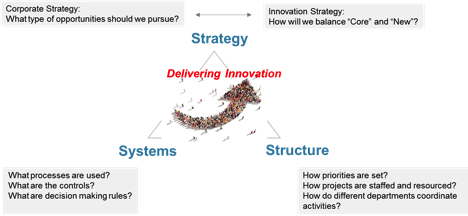
Most of the popular innovation concepts and tools are focused on selected elements of Strategy (think Blue Ocean vs. Red Ocean Strategy, Disruptive vs. Sustaining Innovation) and selected elements of Systems (e.g. various methods for opportunity identification, business model generation, Agile development, etc.). However, as we already know from our experience with the Stage-Gated process, all of the three S’s should be fully considered and systematically integrated within an organization to deliver on innovation.
For example, as Gary Pisano of Harvard Business School wrote in his recent paper, HBR, 2015: “You need an Innovation Strategy” , organizations rarely tie their corporate strategies to innovation strategy. And this is exactly what is required to “help them to make trade-off decisions so that they can set overarching innovation priorities that align all functions.”
But even a good strategy alone isn’t enough to deliver business success. The “3S” perspective clarifies that what’s also needed is a defined business process to guide a company in its execution of “new” initiatives. This process will describe how programs are initiated and selected, how they move through the development stage and are evaluated, and how various functions come into play as the programs move from the front-end of discovery to the back-end of execution.
So, if we once again return to the metaphor about the blind mice and the elephant:
It appears that the seventh mouse is missing from the “innovation tale,” which is the allegory of the search for a coherent process that’s necessary to tie together all the important and related but separate innovation concepts and structural elements. As the stage gate process must be installed to effectively deliver products in the “core,” so must another type of systematic process be devised and “installed” in order to successfully deliver the “new.” This process must allow for fast experimentation and adaptation, and at the same time provide a basis for deep, systematic connections between the innovation teams and the rest of the business.
In my next article, I am planning to share an Execution of Innovation model. It’s an analysis of and a reflection on successful innovation programs employed within large companies, which I either led myself or studied. It can help innovation leaders define more precisely what capabilities are needed within their organization in order to build a successful innovation program.
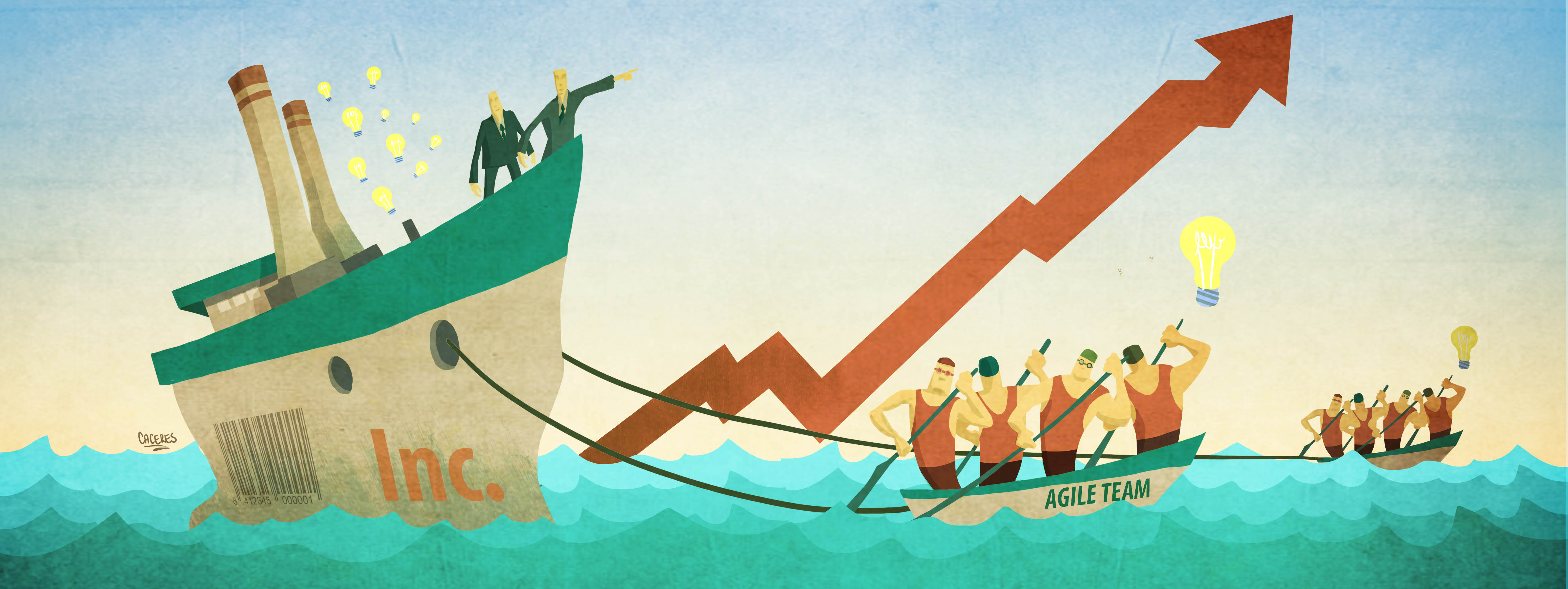 June 3, 2015, Originally published at PDMA.org Can Large Companies Really Innovate Like Start-ups?
June 3, 2015, Originally published at PDMA.org Can Large Companies Really Innovate Like Start-ups?
Many companies now are thinking and talking about themselves as “Agile”. But what does it really take to implement these concepts without falling into the trap of adopting “yet another best practice” and getting frustrated? This might be trickier than it seems.
Read the full article
Can Large Companies Really Innovate Like Startups?
Large companies are not start-ups and never will be. They are designed and operate differently. To innovate effectively, large companies can’t just replicate start-up principles. Rather, they must adapt them in ways that are smart and tailored to their organization.
Visionary leaders understand the marketplace is rapidly changing. Businesses mature, growth plateaus, profits diminish. Disruptions—i.e. business version of the “Kodak-moment”, or Netflix’s shift in business model—are part of the ever-changing business landscape that today’s leaders face.
Long-term success requires organizations’ short-term adaptation. Effective leaders look to new models of innovation. Take, for example, Business Model Innovation,Agile Innovation and Lean Start-ups. These models help big companies embrace change through disruptive thinking.
Large companies have tried applying these concepts for some time. Particularly challenging is this: Companies have to facilitate innovation, which disrupts regular modes and methods of operation, while, simultaneously, reallocating financial and human resources to development, production, and testing of new ideas, process and products.
For example, Company “X” struggles to apply an Agile approach to its already innovative culture. Moving away from their standard workflow in favor of execution speed has generated real internal chaos (and employee dissatisfaction). The reallocation of resource relied too heavily on individuals’ power plays to drive multiple projects. Suddenly, “agile” projects aren’t moving so fast.
Or look at Company “Y”: a manufacturing technology-based firm. Company Y’s “agile” teams were untethered from standard development process, to the point where they were no longer guided by any process, becoming isolated from the rest of the business. Too focused on technological components, the team returned with a “developed” product that the rest of the business was ill prepared for—and it could not be commercialized quickly. Their disruptive line of thinking—meant to depart from the norm and foster innovation—was actually disruptive to operations.
How can process changes produce better results, or in what ways can other organizations, like Companies X and Y, adopt and adapt start-up methodologies without confounding internal teams, disrupting workflow, or staging clashes between the new and old, when company culture is in transition?
Answering this multifaceted question means a deeper understanding of the challenges leaders face as they move their businesses along an agile path:
Generating disruptive ideas. Start-ups are built around embracing change. They rely on generating and adapting to disruptive ideas and outside-the-box thinking. Without legacy in place that binds or stalls large companies, smaller firms strategically utilize limited resources to actualize new ideas.
By contrast, large companies spend more time and energy assessing if something fits strategically. It’s very difficult to break out of legacy operation and limiting behaviors. Their narrow focus solidly entrenches them in the status quo.
Generating disruptive ideas is the first and biggest challenge faced by large companies seeking to innovate. Because in reality it isn’t about ideas, it’s about uncovering opportunities. This requires connecting market and technology insight with deep customer understanding. To identify opportunities, you must also understand the industry ecosystem within which your company operates. This is why traditional brainstorming methods rarely lead to identification of large, disruptive opportunities. And treating idea generation solely as a numbers game is a misguided approach.
To successfully uncover disruptive opportunities, organizations must:
- Reframe core competencies to support idea generation
- Embrace concepts that focus on recognizing disruptive opportunity
- Cultivate new skill sets, absent or weak within the existing organization, that are necessary for developing and pursuing new opportunities
Quickly redirecting resource, adapting disruptive ideas. Start-ups are built around experimentation. Ideas are prototyped and quickly brought to market. If the test fails, then the business regroups, adapts, and releases another prototype for testing.
Large companies can develop the same capacity by incorporating Agile Innovation principles and Lean Start-up methodology into standard practice.
But here is the challenge: Applying these methods on a project level may make sense, but can pose significant challenges at the organizational level.
Consider that large companies have much greater resources and capacity than startups. The problem is that the resources have generally been allocated.
To innovate successfully, larger firms must leverage resources toward testing new ideas. If the idea shows promise or warrants further testing, they must reallocate resources as appropriate to support disruptive projects.
This kind of innovation requires participation through all levels of the organization, with a radical shift in how R&D innovation teams connect with other parts of the business. Without this shift many great ideas fail even after they pass market tests.
The ability to reallocate resources for disruptive innovation allows larger companies to assert their traditional advantage over smaller companies or start-ups. They are able to leverage existing brands, established relationships, and internal or external market and supply chain channels.
New Leadership Model
Executive level support is critical to the success of disruptive innovation—this is a given. But what many companies overlook is strengthening the “scaffolding” of their new ventures. Organizational structure and methodology that support disruptive innovation as a process must be integrated or “installed.” New ventures require cross-functional and departmental alignment as they move towards commercialization.
Executives might authorize new investments, but they don’t assign resources. As a result, mid and senior level managers can be pulled in several different directions at once, especially when several leaders sponsor multiple projects.
One solution is to establish a team entirely dedicated to innovation, with authority and resources to establish manufacturing pilots. In reality, though, this is frequently impractical. Most companies need to test ideas within their existing organizational structure.
Another solution is the combined approach:
- Applying Business Model Innovation to embrace disruptive idea generation
- Using agile development and lean start-up methods to develop models for iterating
- Designing multi-level organizational strategies and agile but systematic processes to support start-up thinking and methodology
Combining approaches helps identify strategies that don’t disrupt operations while still introducing new methods. The goal is to help businesses commercialize their disruptive ideas by connecting innovation efforts to the existing organization.
It’s important to embrace tradition (i.e. core values, validated process) and change. Multi-level strategies then help to re-align the organization as a whole as it integrates disruptive change. The result is the ability to adopt disruptive ideas without disrupting operations.
NEWS & UPDATES

May 10, 2017, Owens Corning’s innovation team partners with InnoVentures to “plan for future growth”. The success story is presented at the IRI Annual Meeting in Boston on May 10, 2017
Read this client success storyThe maker of building materials and advanced glass fiber solutions engaged InnoVentures to augment its capability to build new business platforms based on emerging technology. The result: a new competency of integrating technology and business model innovation is built, and a major international business platform is advanced into early commercial stage, with the first product launch achieved leveraging strategic partnerships.
View a case study co-presented by Irene Spitsberg of InnoVentures and Dr. Anne Berthereau, VP of Composite Business Solutions Emerging Technology at Owens Corning, at the Industrial Research Institute’s 2017 IRI Annual Meeting.
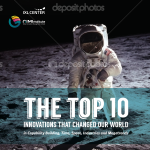
August 16, 2016 Agile Thinking is on the Top 10 Innovations in Capability Building list for 2016 by Global Innovation Management Institute (GIMI)

August 1, 2016 Congratulations to our associate Eric Baron, writer and editor at Novotorium incubation space! Eric is a talented and insightful content creator. Best luck to him and ericbaronfiction.com
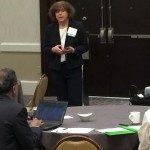
May 24, 2016 Irene Spitsberg is presenting a workshop at the IRI 2016 Annual Meeting in Orlando: “Translating S&T Trends to Quantifiable Business Opportunities” …a unique approach that puts equal emphasis on both market- and technology- driven discovery and emphasizes the leadership role of S&T organization in the opportunity discovery and pipeline building.

January 23, 2016 Irene Spitsberg is presenting a workshop at Pittsburgh Technology Council: Agile Thinking: Bridge the Gap between Strategy and Execution and Build an Efficient Innovation System that Actually Works!
November 11, 2015 Irene Spitsberg is speaking to GE technology leaders at the GE Learning Center, Cincinnati, OH: Critical Innovation Competency…is the ability to recognize technologies that can best be exploited by a particular company and to drive investment in them.
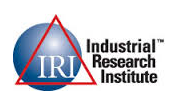
October 20, 2015 Irene Spitsberg is speaking at 2015 Member Summit in Chicago: Agile Through Different Lenses – Applying Agile Strategies to Outside-the-Core Innovation and How to Actually Make It work
Read more at: The Best Conversations Start Here: Agile Growth
October 6 and 13, 2015: Irene Spitsberg is presenting a two-part webinar: Applying Agile Strategies to Outside-the-Core Innovation and How to Actually Make It work.
Part 1:
Part 2:
Read more
During two webcasts, Irene shares a practical, unified framework that any company can apply to build a more efficient, agile and impactful innovation system – and one that works with your structure and specific innovation objectives. Informed by her first-hand experience delivering innovations (both failures and successes) within leading global corporations, Irene will share a foundation to “move the needle” toward the execution success.
Download the recording from the PDMA store http://www.pdma.org/p/cm/ld/fid=105 http://www.pdma.org/p/cm/ld/fid=316
September 23, 2015 – Irene Spitsberg of InnoVentures moderates industry experts’ panel discussion at Pittsburgh PDMA.
America Invents Act (AIA) at Two Years What Has Changed (and What Hasn’t)
Two years have elapsed since the USA adopted the “first to file” priority. Cindy Pezze, Vice President and Chief Technology Officer, Westinghouse Electric Company and James M. Singer, Patent Attorney, Partner at Fox Rothschild LLP discuss the changes and impact on the invention landscape as well as provide guidance on strategies for dealing with the changes.

